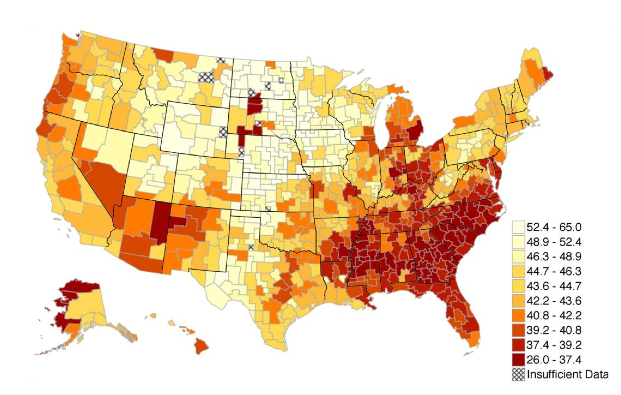Code Green Solutions


Place matters. Where you grow up largely predicts how you will do economically relative to your parents, according to a several studies released earlier this year exploring the links between economic mobility and geography. This correlation underscores the importance of both social structures as well as physical structures, that is to say, the built environment. And it means that green building practitioners have a role to play in creating communities that foster opportunity for all.
In addition to attributes that we might expect—such as parental income, race, quality of schools, family structure—the new research also suggests correlations with the diversity of neighborhoods. Children of poor families who grow up in close proximity to middle class families are much more likely to escape poverty. Proximity gives them access to the land uses, services, transportation systems and schools of the middle class.
The findings underscore the additional benefits of creating pedestrian-friendly, transit-oriented, mixed income communities with diverse services. In the push and pull of planning and development processes, where the stakeholders are many and the tradeoffs are tough, explicit goals and metrics play a critical role in ensuring that co-benefits to be achieved. Many of the laudable goals and metrics used to create great places can leave the people who need them most in the dust by increasing land values and pricing out vulnerable populations through gentrification. Without explicit targeting and tracking of social equity goals and metrics, the most vulnerable members of a community can be pushed out.
However positive, commitments to support environmental benefits (such as LEED certification) are not enough to ensure the full public benefit of projects for the local community. It is a sign of LEED’s success that increased building performance can increase profitability. But if higher rents are driven by evicting and displacing existing residents or occupants, it’s hard to say that project is contributing to the public good. Without better metrics and targets for social and economic benefits for the community, we are leaving part of the sustainability value proposition off the table.
This is more than a call to altruism. A growing body of economic research points to the role of the middle class in economic growth and recovery. Investment in projects that support green redevelopment of our urban areas are in many ways the same strategies that support a thriving middle class (by providing both jobs and access to services).
The green building world has proven tools for changing business as usual, and these tools can be leveraged to make better places for all. As we more fully explore and define the characteristics of place that create pathways to a better life, the more able we will be to translate the goals of social equity into mechanisms for change, both within and outside of LEED. An inclusive, integrative process of development that defines, incentivizes and tracks a more full accounting of the triple bottom line of sustainability can help to create more diverse, resilient, healthy and equitable communities.